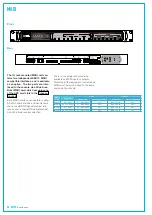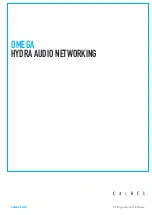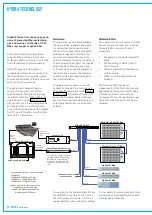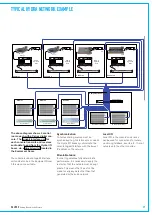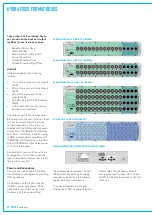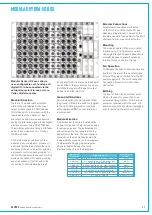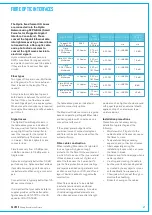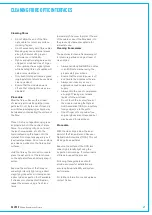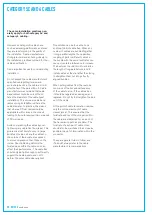
0 Omega
with Bluefin
The same installation practises gen-
erally apply for both category 5e and
category 6 cabling.
However, as category 6 cables have
such a demanding performance criterion,
they are less forgiving in the quality of
the installation. Cable manufacturers
strongly recommend adhering closely to
the installation practises outlined for their
cable specification.
Some important issues to consider during
installation:
Do not exceed the cable manufacturer’s
specified cable pulling tension and
avoid sharp bends in the cable, as it will
alter the lay of the pairs within it. Cable
manufacturers recommend that cable
bend radius should be no less than 4
times the diameter of the cable (post
installation). The minimum cable bend
radius during installation is 8 times the
cable diameter. In practise, this means
that where a 25 mm radius would be
appropriate within a rack, the conduit
leading to it would require minimum bends
of 50 mm radius.
Avoid compressing the cables by over-
tightening any cable ties (tie-wraps). This
problem is most likely to occur in large
bundles of cables, where the cables on
the outside of the bundle are exposed
to more compression than those on the
inside. Over-tightening deforms the
twisted pairs within the cable, and can
affect their performance. The cable ties
should only be tight enough to sufficiently
support the cable bundle, and not to
deform the outer cable sleeve/jacket.
CategOry e and Cables
One solution can be to use the hook
and loop (Velcro) cable ties. When any
number of cables are bundled together
in long parallel lengths, the capacitive
coupling of pairs in different cables in
the bundle with the same twist rates can
cause cross-talk interference to increase.
The best way to avoid this is to minimise
the length of long parallel runs, and to
install cables as they lie rather than trying
to straighten them out into perfectly
aligned bundles.
When pulling cables from the reels, be
conscious of the occasional tendency
of the cable to kink. If the cable kinks,
it should be regarded as damaged, and
replaced. Do not try to straighten the kink
out of the cable.
At the point of cable termination, remove
only the minimum amount of cable
sleeve/jacket. This ensures that the
twist rate and lay of the core pairs within
the cable are maintained for as much of
the transmission path as possible. The
twist rate of each pair of cable cores
should also be maintained to as close as
possible to point of termination within the
connector.
These are general rules to follow, and
if in doubt, always refer to the cable
manufacturer’s recommendations.
Содержание OMEGA
Страница 7: ...calrec com OMEGA Putting Sound in the Picture Overview...
Страница 13: ...calrec com OMEGA Putting Sound in the Picture Frame Options and Dimensions...
Страница 18: ...18 OMEGA with Bluefin...
Страница 19: ...calrec com OMEGA Putting Sound in the Picture Equipment Installation...
Страница 37: ...calrec com OMEGA Putting Sound in the Picture Hydra Audio Networking...
Страница 51: ...calrec com OMEGA Putting Sound in the Picture Audio I O Interfaces...
Страница 69: ...CALREC Putting Sound in the Picture 69...

